John’s been in touch. His train stops and starts on the same piece of track and it’s driving him nuts.
Please do add to the suggestions at the bottom of the page if you can help.
“Dear Al,
Thank you for all you do for the hobby and all the work you do for the many readers.
Perhaps one of your readers can help me solve a problem…
Al has featured my layout in the past. The track plan is as illustrated.
At the two places marked X, the train suddenly almost stops (or sometimes does actually stop) and I have to give it a nudge to get it going again.
The system is DCC and the track is sparklingly clean as are the wheels. I do have jumper wires connecting the different pieces of track and I have checked the track voltage. It is consistent throughout.
Also, it is not at the end of a piece of track (which could suggest a voltage drop) but in the middle of a 1 meter piece of Peco Flexitrack!
Does anyone have a bright idea about a possible solution? I have tried everything that I can think of but am I missing something?
Thanks for your help.
John”
I’m very much looking forward to your comments on John’s issue. I think we’ve all had a layout where the train stops and starts and has left us scratching our heads.
Pleave a comment below if you can help!
It also reminded me of Ray’s post: Model train keeps stopping.
Next, John:
“Alastair:
I thought you and your readers might enjoy some of these.
This 80 year old, coal fired J Class (the 611) from the Norfolk and Southern made three runs this weekend between Manassas, Virginia and Front Royal, Virginia (west of Washington DC).
I was able to photograph it all six times (outbound and inbound).
I do process my images to look for like illustrations. Feel free to distribute any way you wish.
John”
Now on to Nancy.
I do love it when folk add a personal back story to a layout, like Nancy:
“Hello Al and All
My paternal Grandparents with their three sons built a log homestead on the Montana Continental Divide in Woodville around 1900. It still stands!
In fact, I have loved it all my life!
Had to build one for my layout. What do you think?
Best fun!
Nancy from Sequim”
That’s all for today folks.
Please do leave a comment below if you can help John.
Please do keep ’em coming.
And if today is the day you stop dreaming and start doing, the Beginner’s Guide is here.
Best
Al
PS Latest ebay cheat sheet is here.
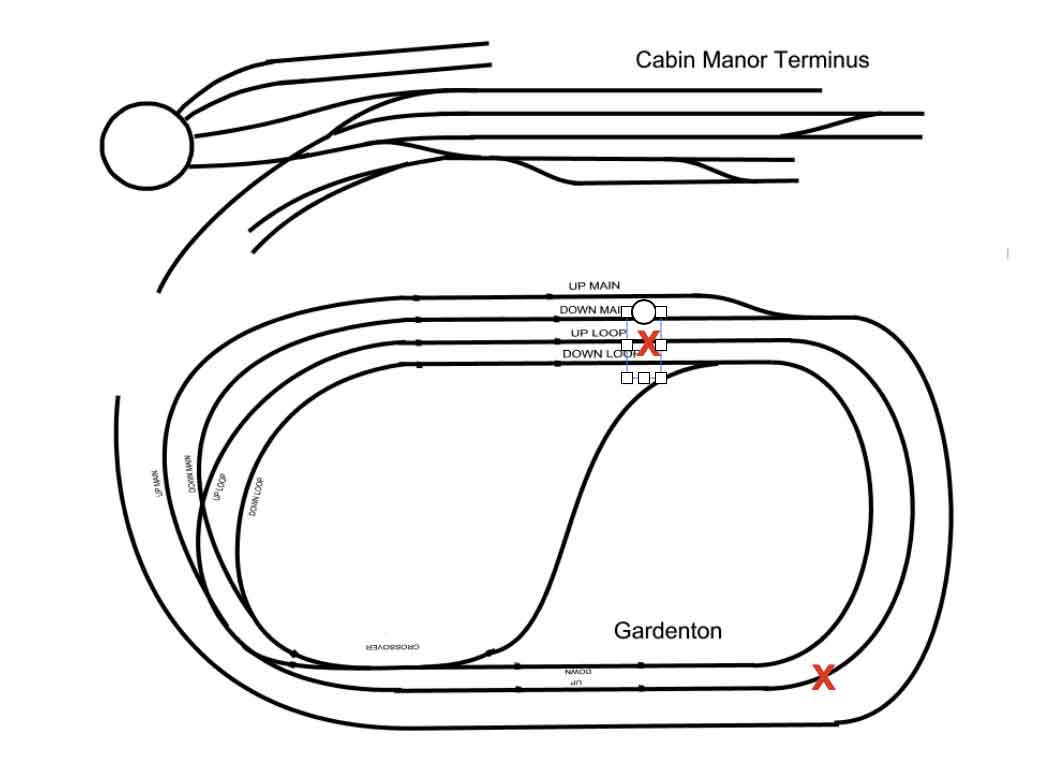






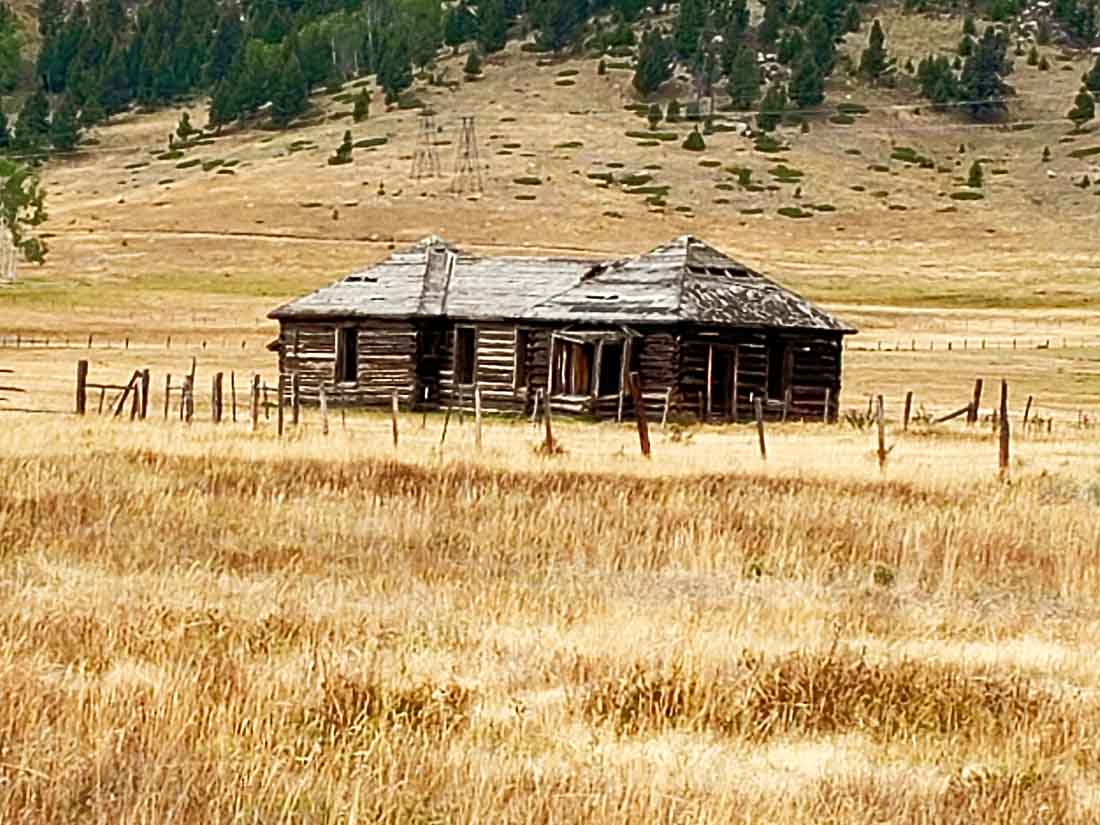
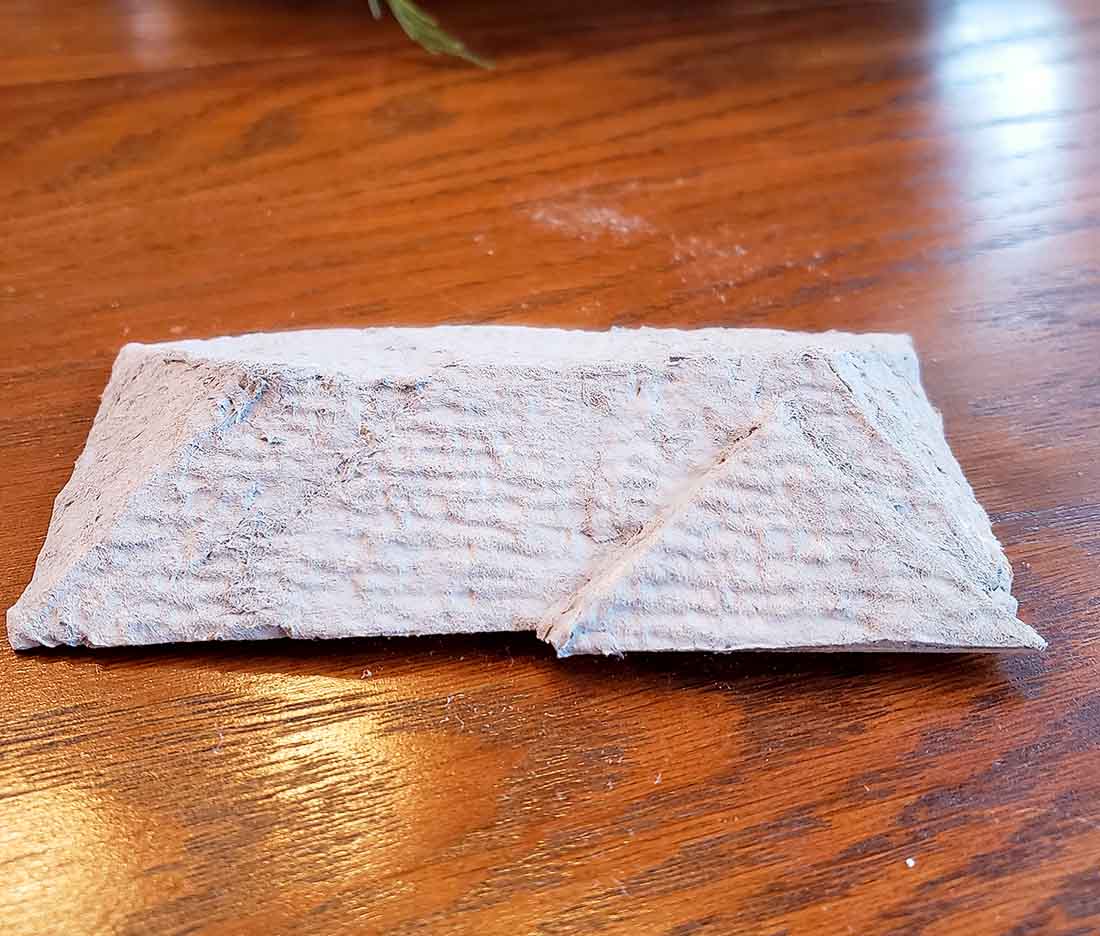
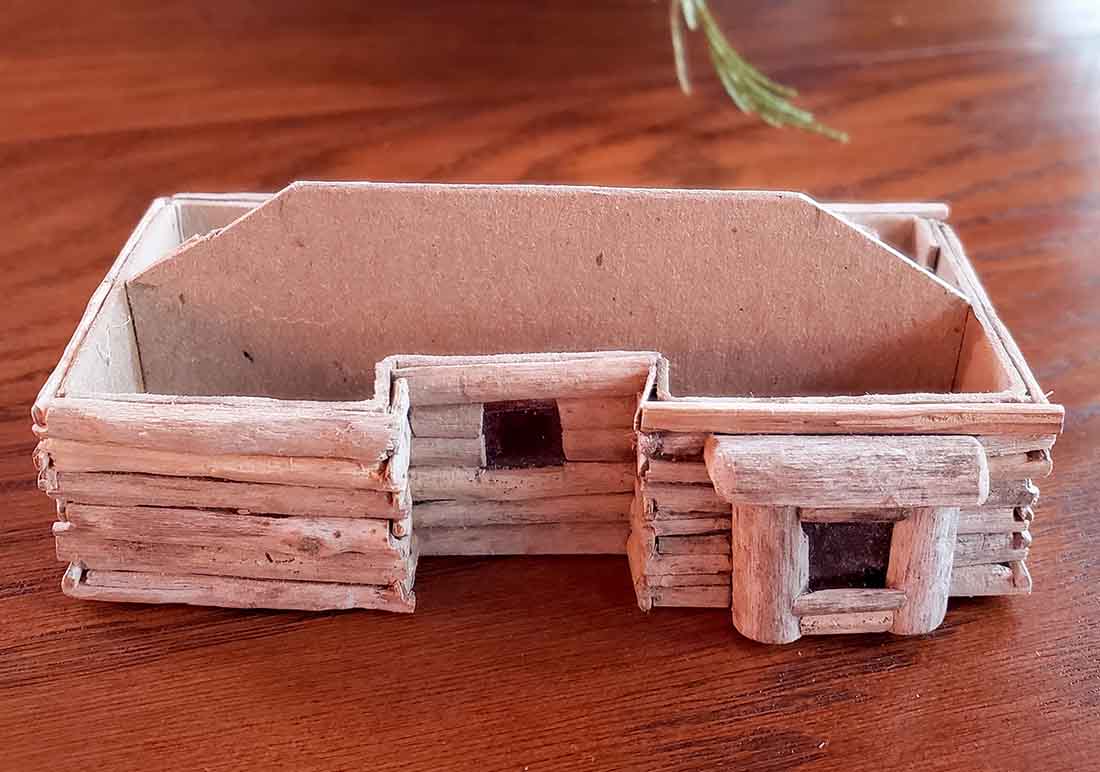
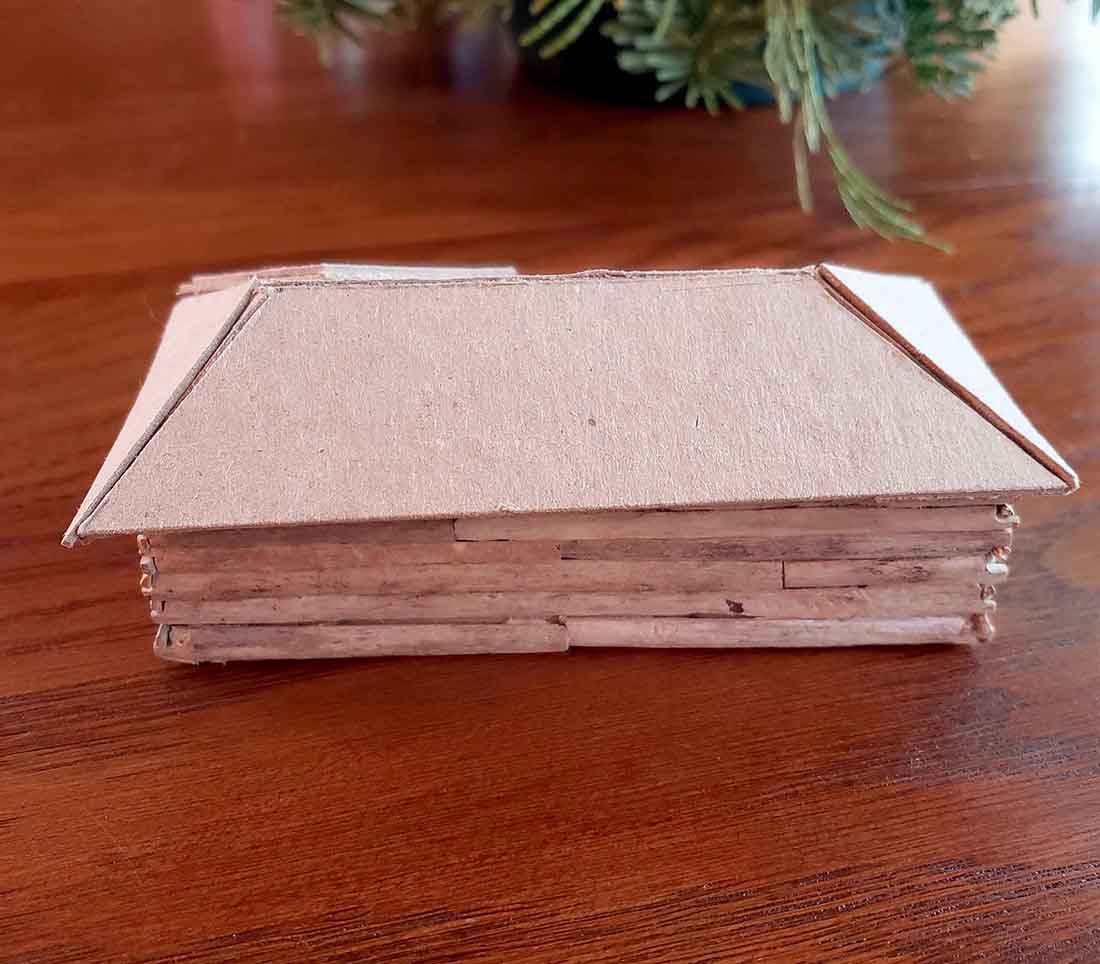
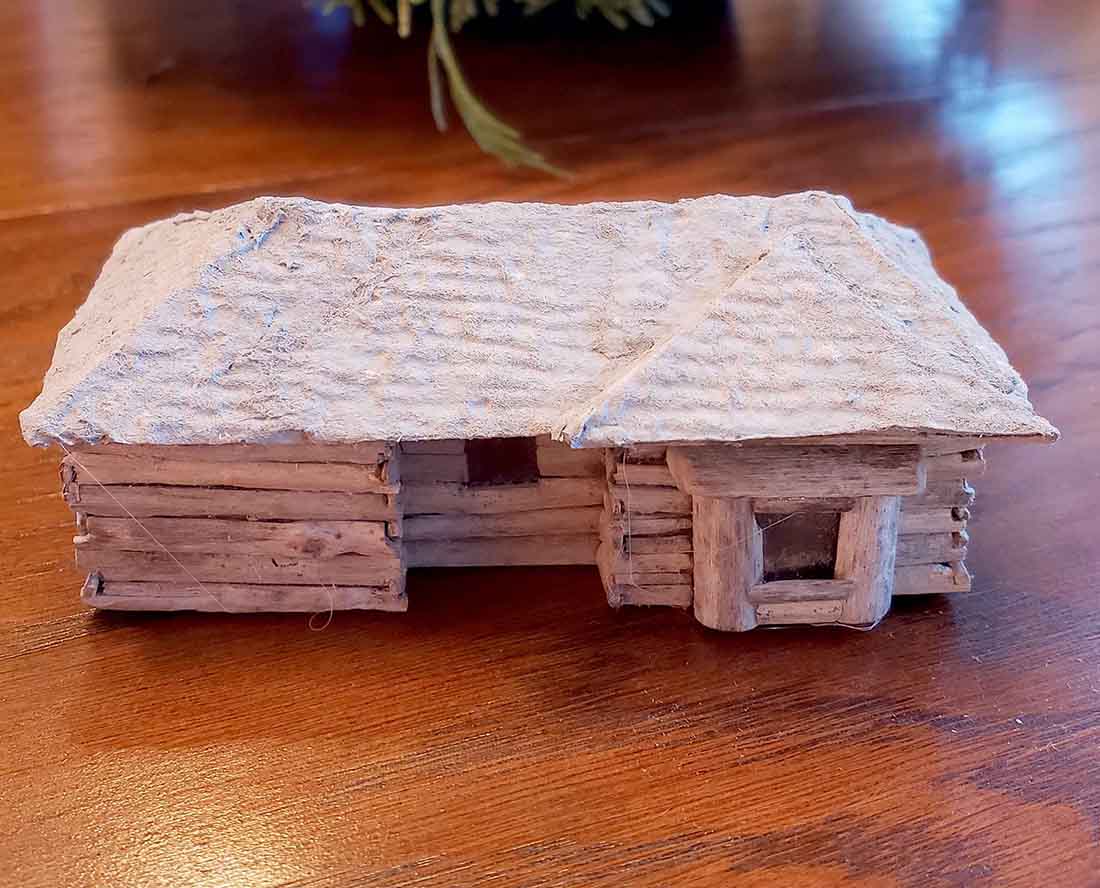
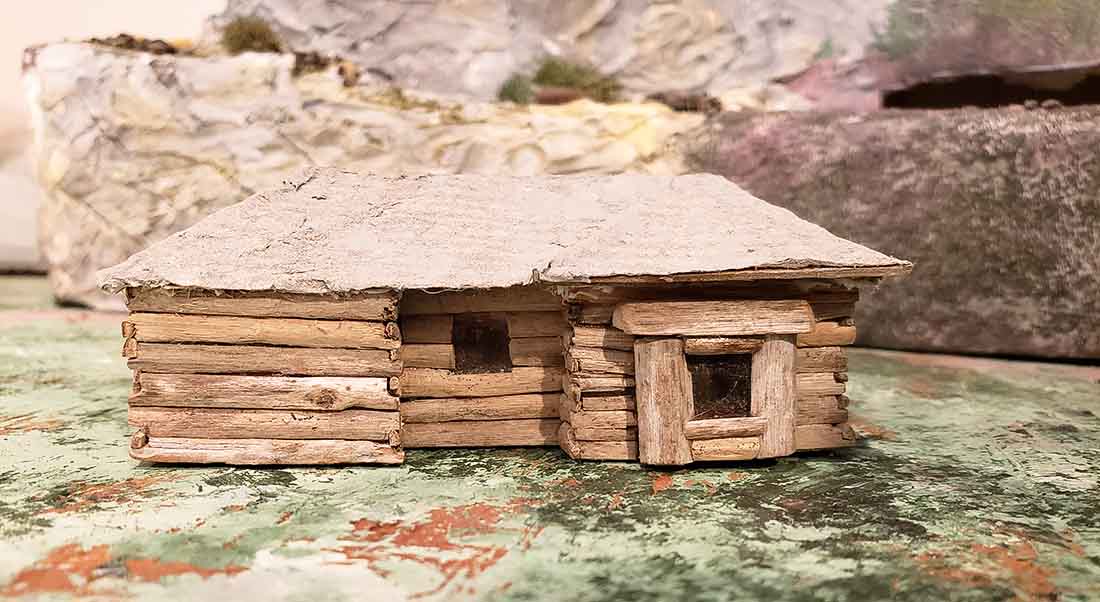

Hi John, I see there are two reverse loops in your track plan, are they properly insulated? The next step would be to check the track gauge where the trains slow down and stop. A NMRA standards gauge will be handy in this case. When the track gauge is narrow it will pinch the wheels and slow the train down. If you push a piece of rolling stock without a loco over that piece of track, does it also slow down? If it does, it is an indication that the track could be your problem. Also check the that the wheels of your locomotive are all in gauge.
Hi John,
Suggest you run a couple of bus wires under your base area with dropper wires down joined to the areas where connectivity is not an issue. I would suggest that you are having problems with the rail joiners perhaps oxidising and depending on the voltage and humidity etc may be limiting the voltage to the track (jolting) or cutting it entirely (stopping). I have had this issue with Peco set track that I replaced my flex track curves with, mainly after ballasting.
Hope this helps
Trevor
John, do you have power connections on both sides of every turnout? Doing thing has helped my layout reliability.
Hi John, what sort of loco is it that stops, do all your locos do it or just the one ?
If it’s a short loco it could be a dip in the track so the wheels aren’t touching the track properly.
Mike S
John, I don’t do DCC myself but I presume there has to be some switchgear to alter the polarity for a train to go round the reverse loop doesn’t there? I’ve been told this can change automatically without stopping the train but wonder if it is causing some sort of surge or interference when it flips? The other thought is, if it stops on the middle of plain track and restarts with a push, maybe you have pinned the flex track down a bit hard and bent the sleeper base inwards, which can have the effect of narrowing the gauge and lifting one side of the loco? Good luck.
Rod
In answer to John …if you have droppers feeding to your track there should not be a problem , maybe you have not enough?…suggest droppers (feed to the track) every 4 ft. ……..the log cabin looks great
Hy John, I am going to take a stab at your problem. You say that the trains slow down and sometimes stop and then when pushed a little they run. This strongly suggests one or more weak connections. My solution is to solder every metal track joiner in the lower left of your track plan. Also check your wire under and look for opens within the insulation. Any wires connected to the bad track should be replaced. Make an LED unit and solder it to the bad track and watch the LED when a train goes buy. Good chance it will dim or go out or flash. Again weak connection. Now wiggle attached wires to see if you can create the problem. Bob
I notice you have the tracks marked up and down. Could I ask if you have tried the locomotives in the opposite direction, and does the same occur?
A point to note is that whilst the track voltage is present, a poor soldered joint will deliver the voltage but fail to supply the current required to run the locomotives.
I hope you get it sorted, these issues can be quite frustrating.
Mick.
John,
Check your section of Peco Flex track to see if there are ANY plastic rail jointers! its causing an “end” voltage and the engine rolls on flywheel momentum to mid-point of the section of track….
Hope this helps!
Hello John, it’s John here
How frustrating. I’m not into DCC so I can only offer suggestions based on DC practice. Apologies if you already covered these but you haven’t told us what you have tried and a couple of questions do spring to mind.
Does it happen with all of your locos or just certain ones?
Is the track perfectly level?
Could there be any invisible lacquer spots on that gleaming track?
I used lacquer on the wheels of my old Hornby Dublo 3 rail to help them run on 2 rail track. It was invisible and it worked, so I wonder if that could be an issue
Apart from that, no ideas I’m afraid. Hopefully someone can do better shortly
Good luck!
John
If not “electrical”, perhaps “mechanical”. Check obstructions on the side of the track and in the middle of the tracks, Check all dimensions and distances, check for inclinations or distortions of rails and rail heads, also check dimensions and alingments of the loco and cars wheels. Good luck.
Hi John. I see that the area you have problems in is bounded by either a turnout or the crossing track. I assume you have checked voltage etc and that the polarity is not a problem. I would suggest you make up a short jumper lead with crocodile clips that you can use to jump the points or crossing to ensure that power is passing. As the problem is intermittent it would suggest that you do have a bad connection at one of these positions. It maybe that you will have to make two leads to jump both rails. Another way to test is to make a longer jumper lead and move it along the dead track to see if there is any point that the track starts up again. This may give a clue to the problem.
Nancy, I love your cabin.
John, as your problem is only at specific spots, it points to a track problem, but just to be sure, does it only occur with one loco or are others affected?
I would start by checking that the track is completely flat at those two points, as a bump or dip would cause one or more wheels to lose contact with the track. Even on a perfectly flat baseboard, this can happen if a track pin is driven in too hard, especially on a cork underlay or similar surface.
Regards,
Martin
OK, I am not DCC!!! But what you describe may just be a point where the ties that hold the track in place raise the wheels just enough to where that lose contact with the rails. Two solutions – 1 – file the plastic down to where the wheels stay in contact 0r you could try No. 2 – place a shim under that point where the engines stop on side first, then the other last resort – solder a thin wire at those spots.
Hope this helps
Nancy, what a great idea to build a model log cabin with actual sticks! I’m N scale and I’m going to start looking for tiny, straight, twigs right away! And to still have one in the family to model is so wonderful! When I was young(50 years ago), there was a very dilapidated one on my “Aunt Lou’s Farm” that was a good hike back from the dirt road on the banks of Hop Creek. We loved hiking out there as children to pick wild grapes or plums or just share family time. I’m sure it’s gone now.
So you have a bunch of trains running on DCC. A foundation DC voltage with various frequencies duplexing on this circuit for train momentum control and all else. Appears to me anyways there are 2 assigned signals that are close to each other mixing and under certain conditions are overlapping or combining. Maybe one of the controllers has a capacitor out of tolerance.
Different power systems or all one brand? Eliminate all but one train and power up, then try the different settings and engines… see if they all do same thing. Other issue may be a outside frequency interfering with assigned settings. Yes, have seen rogue 60HZ signal completely wipe out Mega-HZ signals, way overpowering the airway radiating through the sheer induction just being present. What’s left??
Perhaps it’s a more subtle problem. DCC is a pulse width modulated signal system that is transmitted by the rails. To keep interference from your concentric loops from interfering with each other all that’s required is a pair of insulating joiners at one point in the loop.
Nancy, I love your model of the family cabin, but better yet, I love the actual cabin and where it sits, If that is still family owned property, I would look into making some kind of deal with the folks at HGTV to have that cabin restored.
What a perfect retirement location when your working days are over, and the kids are married and gone.
Yes Nancy, I agree with Don R. I meant to suggest that you look into getting a roof on the real cabin before it rots away like my Aunt Lou’s did! Nothing lasts forever. Ours was built in the mid 1800’s, mostly of cottonwood, unfortunately.
Thanks to everyone for their help. My wife and I worked on my layout together and after she took ill (and subsequently died) I didn’t have the heart to face the railway. So the railway has stood dormant for about two and a half years and one of the first things I checked, when I recently began to focus on it again, was the soldering and have spent time re-soldering many of the joints. The track is level and what intrigues me is that the train slows down in in the middle of a piece of track. The sections are insulated and where there is a reverse loop, I use two-way switches to change the polarity and avoid a short circuit.
Thank you all for your help, I shall go through the suggestions and see if I can solve the issue.
What I didn’t mention is that I am in the UK and using NCE Cab Control.
You didn’t mention if this problem was where two tracks joined or not!
Presuming that is the case, when I built my layout I put a powered track joiner at every other joint so that no 3’ piece of track did not have power from the main bus located under the track under the table!
How this helps!
Looks great.!!!!!! I hope mine comes out that good.
Nancy– I love that you are paying homage to your grandparents by building their homestead. Go girl!
John, Perhaps it is the way your DCC bus is configured. Is it a loop?
If no, then you can ignore the rest of this. If yes, then this could be your problem
(btw – many sites give a much better, more detailed explanation)
In a loop, the signal is sent out in both directions (ex, Right & Left).
With DC, the + & – is the same & constant.
So, when they meet at the back of the loop, the signal/voltages are “In Phase”
With DCC the + & – alternates (b/t approx 8kHz & 10kHz).
So, when they meet at the back, the signal/voltages are, most likely, “Out of Phase” and, most likely not exactly 180-degrees out.
If this is the case, there would be a “cancelling effect” that would vary as a function of the signal at that time.
Just a suggestion, but I hope it helps.
Are your locomotive wheels clean?
If it’s not a physical problem, it may be a power problem. You may need Power Boosters, or, set up Power Districts. DCC can be a little tricky at times. Do use same Brands of Power source and watch the polarity and phase.
Hi John,
Doesn’t sound like a soldering issue. The most probable explanations are track guage and track level, which several have suggested. A track guage is the first step then a straight edge along each rail individually for several inches (cms) to make sure the top of the rail is straight as well as level. I would also run the straight edge along the inside and outside of the rail looking for deviations. Sometimes during ionstalations, we damage the straightness of a rail which may cause similar problems. Also I assume the problem occurs no matter how long the ttrain and something several cars down is not grabbing at another spot down the line.
John
You did not reply as to if this was happening too all locos or just one. I have a loco made by Bowser that had a similar problem. it was the only one that stalled on a certain piece of track. It turns out that the was a very slight dip ( mean very very slight) in one of the rails and the wheel base of that engine was just right to react to that dip.. Check to see if an engine with a different wheel base has the same problem.
I’ve had that same problem and I resoldered the track jointers. That cured it, had enough for tester but not enough for the engine. Hope that helps.
I had the same problem. Loco would slow down in certain areas. Transmission fluid conducts electricity. I spread TF on the rails about an inch long every 3-4 inches. Then ran a locomotive,only, to spread it all over the rails. Fixed my problem immediately and no problems since. It’s been about 5 years now. I learned this from a retired BNSF employee working the Tower at Bailey Yard in Nebraska.
Nancy what a family heirloom to have in the family. I liked the one comment to make a deal with HGTV, Discovery Channel or even this old house on PBS (If it is still on)
I like the use of the natural sticks as logs, but the actual roof that you have made, if painted close enough to the real thing, it would make that part of your layout a real eyecatcher. Keep up the good work and keep us updated.
Nancy,
I most strongly agree with the suggestion to repair the roof of the real cabin without delay. Our lab has dated many structures with tree ring samples from the logs. Only buildings with good roof integrity (or had weatherproof roofs until recently) had solid timbers worth sampling.
John, I have had similar problems on my layout, mostly with 4 axle locos. I found in a couple of spots that the track was uneven, had a sharp change in grade, or had a kink in it which lifted one or 2 of the wheels up and caused it to stop. I also found a spot where due to a change in gradient one loco would hit the track with it’s pilot and would stop. Going faster, or running 6 axle locos seemed to make a difference.
Hope this helps
Invisible muck on the rail(s), warped rail(s), electrically isolated rail(s).
I’m on the side of track guage (mechanical) issue.
John, Does this happen with a train or just with a loco only? If with a train, there could be a point back along the train that is causing a short or mechanical glitch that is holding back the loco. Just grasping at straws.
i am presently in the designing stage of my second ho scale layout . At this point i am looking for information concerning buildings scenery and wiring .Weathering and the whole 9 .
Why not just change that section of track. That’s what I did.
Hi John! I would suggest laying something flat across that section of track…… Either a straight edge or a flat plate. Then get down there with a flashlight to see if you have a “low spot” in the track where your train stalls. If you can’t see it easily from the side, then use a mirror held at an angle so that you could see how much light penetrates between the track and the flat surface. Your solution might be as simple as just raising that section of the track a few thousands of an inch.
Really l;ike getting your emails with the info and comments from other modelers. I did HO in the 1960-70 era but did nid not have a place to run them, Now 60 years later, Ho engines in ex wife attic, I have a big place and going into N scale as a newbe
John,
Your jiggawatt transformer setting needs adjustment.
Hi John
Brian here from southern BC Canada.
So you have a issue with your train stopping at the same spot on the track. I too had the same problem. What I found out was the wheels on one side were not touching the track. If I pushed the loc forward it started up again. Or if I pushed down slightly the loc started up. Upon doing so further checking with the loc stopped taking a close look and magnifying glass I could see the one or two wheels were not touching the track. The fix was to level the track. It took me a long time to find out what was wrong. Very frustrating at times. Persevere. Try that fix and see what happens. Good luck.
love it. the building looks authentic, good job.
Hello Al, John and everyone else. Steve here in east Fl, I have been reading a lot of information from everyone. Great info. I guess I was lucky not to have any problems on my HO gauge, but dirty track in a couple spots. I resolved them. That was a 3 X 4. Now since I inherited my Pops O gauge and a lot of O gauge is here. I have a 11 X 14 room to set everything up, O and HO gauge. I know so of you might think, what a nightmare. I have how and where everything is going. I have been drawing out track lay outs and even how I am installing all the wire, AC and DCC transformers. My Pops and Mother are up in there years and he has decided to take care of her. I am very proud of him. I told Pops, I will always have them. So Al, you will be hearing from me time to time, if I can not figure something out and I know even including my Pops will be there for me. Thank you. Until the next time Al and everyone, I have to think about the future table. Wow, I have in my mind what I would like to see happen. It will be a surprise to everyone and even myself. Thank you again.
Sorry about some words are spelled incorrectly, I know you can figure it out. Thank you again
Lots of good advice. For my two cents worth:
You can have an adequate voltage reading and not have good enough connectivity to provide adequate amperage to power the engine. Try monitoring the voltage as the train passes over the troubled area. If the connection is poor you should see a voltage fluctuation as the train passes. You’ll probably wake up in the middle of the night and find that you solved it on your own.
Process of elimination dictates you explore the obvious and eliminate as you go . Do the trains stop at sane spots when you operate them in reverse ? Do they stop in sane spot when you operate them traveling the opposing direction ? Is track secured ? Is it level ? Are there dips or hard to see blemishes at trouble spots . Once you’ve eliminated these , then it could be a wiring issue . You stated you’ve checked continuity and polarity as well as current and those all check out according to what you’ve expressed. If it’s not a technical issue I’d wager it’s an installation issue .. i. e, dip in track , or something with contact to wheels .. I’m a complete novice so my advice may be redundant??? But check the obvious and simple stuff first before you jump in re wiring . Good luck . It seems like a nice track plan and has great potential .
Nice of the nostalgia Nancy that you have with your grandparents cabin , always a pleasure to have connections in real life on a layout . Thanks for sharing and great build on you scratch build , will do nicely .
I had a problem with track connectors. I got WD-40 Contact Cleaner and sprayed all of the connections. No more problem.
Nancy you have built a awesome log cabin for your layout, that should remind you of the log cabin your grandparent’s built. From what I see in the one picture is that you have a very nice layout. Keep up the good work !!!!!
I wonder if your section of track may be out of gauge or be uneven and your pick up wheel of your locomotive may be not touching the rail at a crucial point and results in the engine stalling.
Is it possible that the track is not exactly flat? Can you place a good straightedge on top of the rails and see daylight between the two? The gap can be hard to see but the weight of the loco could open it up enough to cause a stall. Does the headlight go out or blink when the loco enters this location? You only need one rail to drop out to cause you to lose power. This is more prevalent where the track is over a joint in the baseboard or when it is part of a rise or decline. Good luck, I hope you find it.